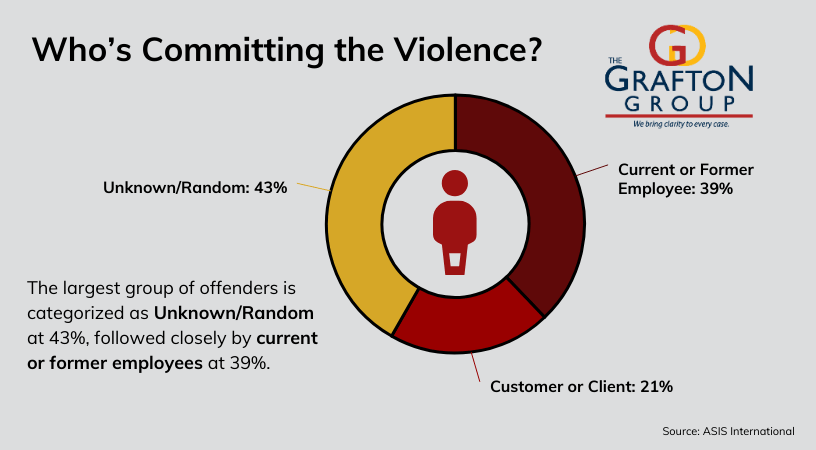If you’ve read the headlines over the years, it may seem like workplace violence is on the decline. The number of workplace deaths caused by violence has dropped compared to the 1990s. That should be good news, right?
Not necessarily.
As someone who has spent three decades in protective services, I can tell you that the drop in workplace deaths is not the whole story. In fact, it may be giving people a false sense of security. The truth is that while fatal incidents have decreased, the number of non-fatal workplace violence incidents remains high—and in some cases, is rising.
Let’s unpack why this matters and what it really means for your organization’s safety.
How the Numbers Can Be Misleading
Here’s what the data tells us:
| Year | Workplace Homicides | Nonfatal Workplace Violence Incidents | Key Notes |
|---|---|---|---|
| 1994 | ~1,080 | Not reliably tracked | Peak in workplace homicides |
| 2019 | ~454 | ~1.3 million per year | 58% decline in fatalities since 1994 |
| 2020 | 392 | ~37,000 (serious enough to miss work) | COVID-19 lockdown effects |
| 2021-22 | ~450/year | 57,610 with time off work | 72% of victims were women |
| 2023 | 458 | Underreported, especially in healthcare | 740 total violent deaths, 61.9% were homicides |
Key Insight: Fatalities have declined, but nonfatal violent incidents—especially in healthcare, education, and retail—remain very common. Many of these assaults go unreported or are minimized.
Why the Death Rate Is Down
So why have fatal workplace violence numbers gone down?
It’s not because people have stopped being violent. It’s because medical response has improved dramatically.
- Faster EMS response times
- Better trauma care in hospitals
- On-site emergency tools like AEDs and trauma kits
Thanks to these advances, many victims who would have died 30 years ago are now surviving. That’s a credit to our healthcare system—but it shouldn’t be mistaken for violence prevention.
What Most Organizations Are Missing
Too many companies see falling fatality numbers and think their workplace is safe. But if you look beneath the surface, a different picture emerges:
- In healthcare, workers face physical assaults daily—mostly from patients or visitors.
- In education, teachers and staff are experiencing more aggression from students and parents.
- In retail, frontline workers deal with verbal abuse and threats that sometimes turn physical.
These cases often don’t make the news. They rarely appear in public data. But they affect real people—and they’re warning signs.
Who’s Committing the Violence?
According to ASIS International, the breakdown of workplace violence offenders looks like this:
This tells us that nearly 4 in 10 incidents involve insiders—people you already know.
What We Can Do About It
As a security professional, I recommend the following steps to address workplace violence before it becomes fatal:
- Start with Awareness – Educate your teams about the full scope of workplace violence—not just shootings.
- Track All Incidents – Create a system where even minor threats or aggressive behavior are documented and analyzed.
- Train Your People – Offer de-escalation and conflict resolution training, not just active shooter drills.
- Use Insider Risk Programs – Watch for warning signs like threats, grievances, or sudden behavior changes.
- Support Mental Health – Provide accessible resources for employees who are struggling.
Final Thought
We’re not safer just because fewer people are dying. That’s not prevention—it’s survival.
To truly reduce workplace violence, we need to look beyond the fatality numbers. We need to recognize that every incident—no matter how small—is a chance to prevent the next tragedy.
Don’t wait for headlines to act. Start today by building a workplace that protects not just lives—but people’s dignity, safety, and peace of mind.


